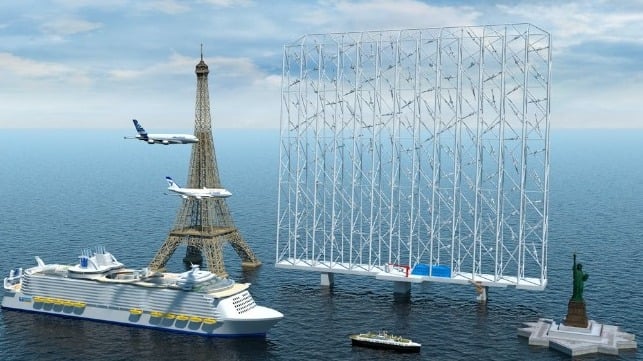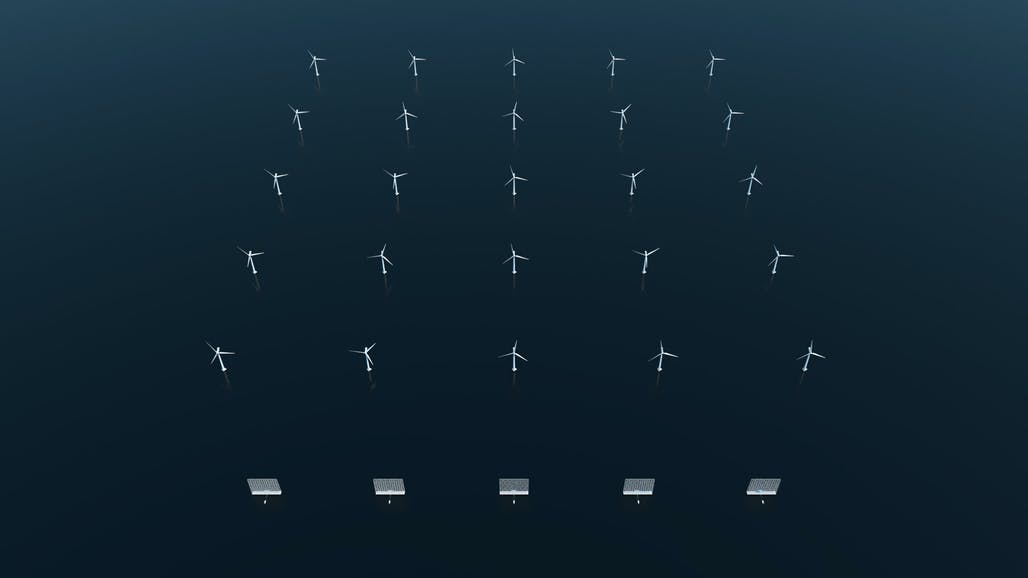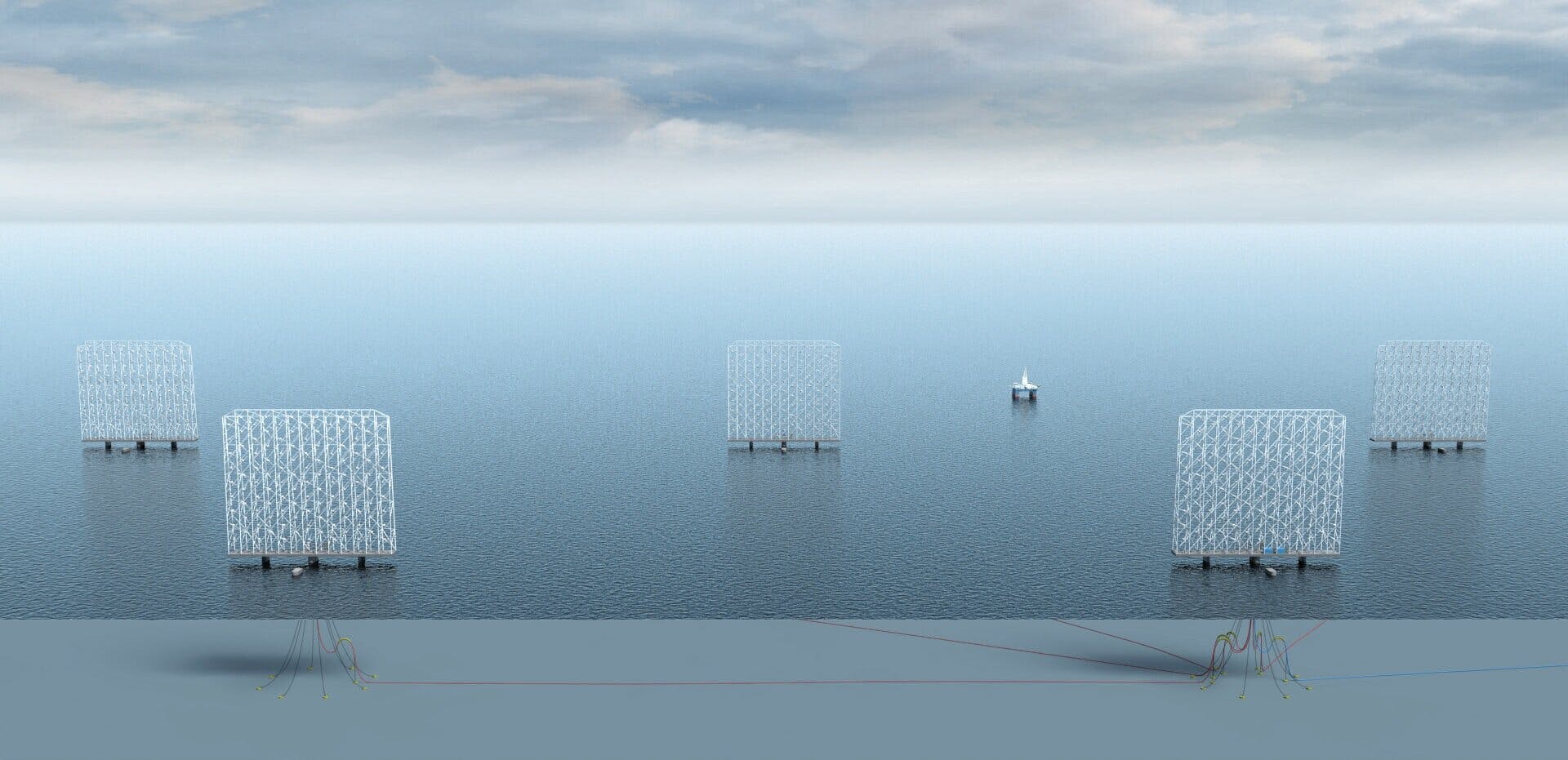Giant Wall of Turbines Could Reduce the Cost of Floating Offshore Wind

The Norwegian startup Wind Catching Systems has a novel concept for deploying floating offshore wind power at scale. Floating wind offers the promise of access to the steadier, more powerful winds in waters further offshore, but it is currently more expensive to install and maintain than conventional bottom-fixed turbine technology.
In partnership with Norwegian contractor Aibel AS and the Institute for Energy Technology (IFE), Wind Catching Systems plans to commercialize an entirely new approach to floating offshore wind. Their patented design is a towering multi-turbine platform fitted with small turbines of about one megawatt each. If built out, this gigantic platform would generate the same energy as a conventional wind farm five times as large (by acreage). Each unit would be able to produce enough power to run 80,000 homes.
Wind Catching Systems' main owners are Ferd and North Energy, and it has additional support from the Norwegian government's R&D fund, Innovation Norway. "The goal is to complete the technical testing and verification during 2021 and to offer commercial development solutions in 2022," said Erik Bjørstad, investment director at Ferd. "Wind Catching has significant competitive benefits compared to conventional floating offshore wind technologies and we see great opportunities for the Norwegian supplier and export industry.”

Five Wind Catching platforms would produce the same amount of energy as 25 conventional turbines (Wind Catching Systems)
 Illustration courtesy Wind Catching Systems
Illustration courtesy Wind Catching Systems
The partners hope that by increasing efficiency, cutting acreage use and reducing operating costs, the multi-turbine floating platform will produce electricity at the same price as bottom-fixed installations. According to Rachid Bendriss, investment director at North Energy, the partners see significant commercial opportunities for Wind Catching Systems' technology in the North Sea, U.S. West Coast and Asian regions.
"Wind Catching will make floating offshore wind competitive as soon as in 2022-2023, which is at least ten years earlier than conventional floating offshore wind farms," said Wind Catching Systems CEO Ole Heggeheim. "Our goal is to enable offshore wind operators and developers to produce electricity at a cost that competes with other energy sources, without subsidies. Simply put, we will deliver floating offshore wind at the costs of bottom-fixed technology solutions, which provides great opportunities on a global basis for the Norwegian supplier industry."
Wind Catching Systems’ technology has a design life of 50 years, and the partners say that it would cost substantially less to maintain than today's floating offshore wind systems. By lasting longer before decommissioning, taking up less space, and using its turbines more efficiently, the design could also reduce the environmental impact of installation and operation.
